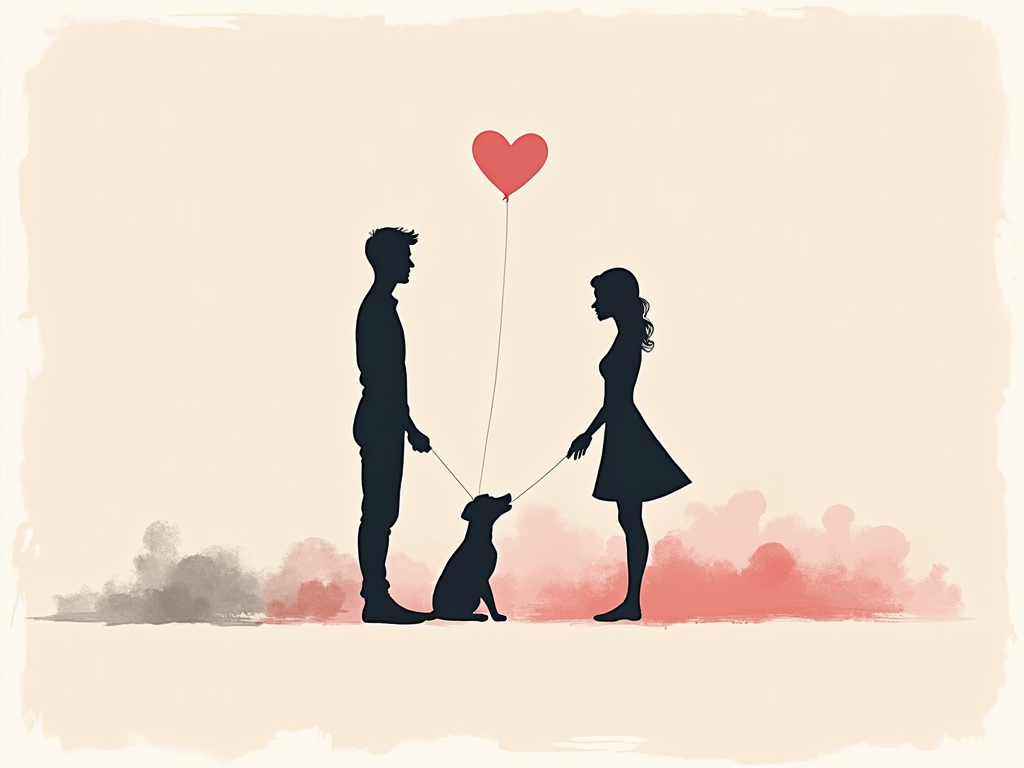
How to Ask a Guy Out Casually: Best Approaches to Secure a Date Without Pressure
Reading time: 8 minutes
Table of Contents
- Understanding the Art of Casual Dating Invitations
- Reading the Signals: Is He Interested?
- Conversation Starters That Lead to Date Invitations
- Digital Approaches: Asking Him Out Through Text and Social Media
- In-Person Strategies That Feel Natural
- Handling All Possible Responses With Grace
- Real-Life Success Stories: Case Studies
- Your Dating Confidence Blueprint: From Invitation to Connection
- Frequently Asked Questions
Understanding the Art of Casual Dating Invitations
The dating landscape has evolved dramatically, with traditional gender roles increasingly becoming relics of the past. Today, 65% of men report feeling flattered when asked out by a woman, according to a 2022 survey by dating platform Bumble. This cultural shift opens exciting possibilities for women taking initiative in dating scenarios while navigating the delicate balance of expressing interest without creating pressure.
Dr. Maya Coleman, relationship psychologist, explains: “When we remove the high-stakes framing around date invitations, both parties can engage more authentically. A casual approach creates psychological safety that allows genuine connection to develop naturally.”
The key distinction between casual and formal date invitations lies in how they’re framed:
- Casual invitation: “I’m heading to that new coffee shop on Saturday. Want to join me?”
- Formal invitation: “Would you like to go on a date with me this Saturday?”
Notice how the casual approach creates an opportunity for connection without explicitly labeling it a “date,” removing pressure while still clearly expressing interest. This approach works particularly well in the early stages of getting to know someone.
The Psychology Behind Casual Invitations
When you frame an invitation casually, you activate what psychologists call “low-risk engagement patterns.” This approach allows both people to:
- Focus on the shared experience rather than relationship expectations
- Preserve social dignity if interest isn’t reciprocated
- Build comfort and chemistry organically
- Reduce anxiety for both parties
Remember that casual doesn’t mean unclear. The most effective casual invitations are specific about activity, time, and location while maintaining a relaxed tone.
Balancing Assertiveness and Respect
The most successful casual date invitations balance assertiveness with respect for boundaries. Being direct about your interest while remaining open to any response creates a foundation of mutual respect from the start. This balance is particularly important when asking someone out for the first time, as it sets the tone for future interactions.
Dating coach Alex Marzano notes: “The most attractive quality in anyone asking someone out is confident authenticity. When you’re comfortable with yourself and clear about your interest without being attached to a specific outcome, you create space for genuine connection.”
Reading the Signals: Is He Interested?
Before asking a guy out, it’s helpful to gauge his potential interest. While everyone communicates differently, research from social psychologist Dr. Eli Finkel suggests there are fairly reliable indicators of attraction that transcend individual differences.
| Interest Signal | What It Looks Like | Reliability Factor | How to Respond |
|---|---|---|---|
| Consistent communication | Initiates conversations, responds promptly, asks questions about you | High | Reciprocate with open-ended questions |
| Body language cues | Maintains eye contact, faces toward you, light touches | Medium-High | Create opportunities for proximity |
| Finding reasons to connect | Mentions shared interests, suggests activities | High | Build on these shared interests when asking out |
| Remembers details | References things you’ve mentioned in past conversations | Very High | Acknowledge his attentiveness |
| Seeks your opinion | Values your input, asks for your perspective | Medium | Share thoughtful responses that invite further conversation |
It’s important to note that while these signals can be helpful guides, they aren’t definitive proof of romantic interest. Some people are naturally attentive and friendly without romantic intentions. The best approach is to view these signals as encouraging signs rather than guarantees.
Differentiating Between Friendliness and Flirting
One of the most common challenges in modern dating is distinguishing between friendly behavior and actual flirting. Research from the University of Kansas found that people accurately identify flirting behavior only about 28% of the time. This “flirting blindness” can lead to missed opportunities or misinterpreted signals.
Look for clusters of behaviors rather than single actions. When someone demonstrates multiple interest signals consistently over time, the likelihood of genuine attraction increases significantly. Pay particular attention to:
- Behavior that differs from how he interacts with others
- Increasing frequency of contact over time
- Seeking private or one-on-one interactions
- Playful teasing or inside jokes
Conversation Starters That Lead to Date Invitations
The most natural date invitations often flow from engaging conversations. Instead of viewing asking someone out as a separate action, consider it an organic extension of your existing interaction. The key is creating conversational bridges that lead naturally to date suggestions.
Interest-Based Invitations
Interest-based invitations use shared enthusiasms as the foundation for suggesting a get-together. This approach feels authentic because it’s grounded in genuine connection points rather than arbitrary date activities.
For example:
- Discover shared interest: “I’ve been wanting to check out the new hiking trail at Riverside Park.”
- His response: “That sounds great! I haven’t been there yet.”
- Your invitation: “I’m thinking of going Saturday morning. Would you like to join me?”
This approach works because it:
- Establishes common ground before the invitation
- Feels like a natural extension of the conversation
- Focuses on the shared experience rather than dating pressure
- Gives him an easy way to express interest or decline comfortably
The Casual Reference Technique
Another effective approach is the casual reference technique, where you mention an upcoming activity and gauge interest before extending an invitation. This creates a low-pressure way to test receptiveness.
Example in practice:
- Casual mention: “That new Marvel movie is finally out this weekend. I’ve been waiting to see it for months.”
- If he responds positively: “Really? I’ve been wanting to see that too!”
- Your invitation: “I’m planning to go Saturday afternoon. Want to come with me?”
If his response to your initial mention is neutral or unenthusiastic, you can gauge that he might not be interested without having explicitly asked him out, preserving comfort for both parties.
Digital Approaches: Asking Him Out Through Text and Social Media
Digital communication presents both advantages and challenges when asking someone out. While it reduces immediate pressure, it also removes valuable nonverbal cues. A 2023 study from the Pew Research Center found that 53% of young adults have asked someone out via text or social media, making digital approaches increasingly normalized.
Comparing Digital Dating Invitation Methods
Percentage of adults 18-29 who have used each method to ask someone on a date (YouGov, 2023)
Crafting the Perfect Text Invitation
When asking someone out via text, clarity and timing are essential. Dating coach Damona Hoffman recommends the “3C approach”: be clear, concise, and confident. Here’s how to structure an effective text invitation:
- Start with context that references your last interaction or a shared interest
- Suggest a specific activity at a defined time and place
- Keep it light with a casual tone and perhaps a friendly emoji
- End with a clear question that invites a response
Example of an effective text invitation:
“Hey Alex! After our conversation about Italian food yesterday, I remembered this great little pasta place downtown called Vesuvio’s. Would you want to check it out with me Thursday evening around 7?”
This text works because it:
- References a previous conversation, creating continuity
- Suggests a specific activity connected to shared interests
- Proposes a clear day and time
- Asks a direct question that’s easy to respond to
- Maintains a casual tone while clearly expressing interest
Social Media Strategies
Social media platforms offer unique opportunities for casual date invitations that feel organic. Instagram, in particular, provides several natural openings:
- Story responses: If he posts about an activity or place, respond with genuine interest, then follow up with a suggestion to go together
- Event sharing: Share an upcoming local event and mention you’re thinking of attending, then ask if he’d like to join
- Activity recommendations: If he asks for recommendations (restaurants, movies, etc.), offer suggestions and add “I’d be happy to show you sometime”
The key advantage of social media invitations is that they can arise naturally from existing interactions, making them feel less like formal date requests and more like spontaneous connection opportunities.
In-Person Strategies That Feel Natural
Despite the prevalence of digital communication, in-person invitations still offer distinct advantages. Face-to-face interactions allow you to read body language, adjust your approach in real-time, and create memorable moments of connection.
The “By the Way” Method
This approach involves casually mentioning your interest in an activity as part of a broader conversation, then extending an invitation as a natural aside. The key is maintaining conversational flow so the invitation doesn’t feel like the primary purpose of your interaction.
For example:
- During conversation about music: “I love that band too! Actually, I just saw they’re playing at the Harbor Festival next weekend.”
- Gauge his response and level of interest
- Add casually: “I’m planning to go. Would be fun if you wanted to join me.”
By framing the invitation as an afterthought rather than the conversation’s purpose, you reduce pressure and maintain easy social flow regardless of his response.
Activity-Based Invitations
Activity-based invitations focus on shared experiences rather than romantic implications, creating natural opportunities for connection without the pressure of a formal date. Research from social psychologists shows that engaging in activities together creates stronger bonds than conversation alone.
Effective activity-based invitations include:
- Group-to-duo transition: “Some friends and I are going bowling Thursday, you should join us!” (After establishing comfort in a group setting, you can later suggest a one-on-one activity)
- Skill sharing: “I remember you mentioned wanting to learn photography. I’m heading to the arboretum to practice this weekend if you’d like to join and I can show you some basics.”
- Opportunity invitation: “I have an extra ticket to the jazz festival Saturday. Would you be interested in coming with me?”
These approaches work because they focus on mutual interests and experiences rather than romantic pressure, allowing connection to develop naturally through shared activities.
Handling All Possible Responses With Grace
Regardless of how perfectly you phrase your invitation, you’ll need to be prepared for various responses. How you handle his reaction can be as important as the invitation itself in establishing respect and potential for future connection.
When He Says Yes
A positive response is exciting, but how you handle it matters. Avoid over-enthusiasm that might create pressure. Instead:
- Confirm specific details (time, place, meeting logistics)
- Express simple pleasure: “Great! Looking forward to it.”
- Keep subsequent pre-date communication light and periodic rather than constant
- Follow through with plans as discussed to establish reliability
When the Response is Ambiguous
Sometimes responses fall into a gray area—neither clear acceptance nor rejection. This might look like: “That sounds fun, but I’m not sure about my schedule” or “I might be able to make that work.”
In these cases:
- Offer a specific alternative: “No problem. How about the following weekend instead?”
- Create an easy out: “Just let me know if it works for you, and if not, maybe another time.”
- Pay attention to whether he suggests alternatives (indicating interest) or leaves it open-ended (possibly signaling polite disinterest)
Dating coach Evan Marc Katz advises: “If someone is truly interested, they will help make it happen. One reschedule is normal; consistent unavailability without alternatives suggests you should move on.”
When He Declines
Rejection is never comfortable, but handling it with grace demonstrates emotional intelligence and preserves dignity for both parties. If he declines your invitation:
- Respond with simple acceptance: “No problem at all, thanks for being direct.”
- Maintain the same friendly tone as before the invitation
- Avoid asking for explanations or attempting to change his mind
- Continue normal interactions without awkwardness if you’re in the same social circles
Remember that rejection is rarely personal—it simply reflects current compatibility, timing, or circumstances. Research shows that resilience in dating comes from recognizing this reality rather than internalizing rejection as a reflection of self-worth.
Real-Life Success Stories: Case Studies
Learning from others’ experiences can provide valuable insights. Here are two real-world examples of successful casual date invitations.
Case Study 1: Maya’s Coffee Shop Strategy
Maya, 28, had been having regular conversations with Ben, a fellow graduate student, after their Thursday seminar. She noticed he often mentioned exploring local coffee shops but never suggested going together.
After three weeks of building rapport through academic discussions, Maya casually mentioned: “That new coffee shop on Elm Street has an amazing study space. I’m planning to check it out Saturday morning to work on my thesis. You mentioned wanting to try new places—feel free to join if you’re interested.”
What made this approach successful:
- It built on an established shared interest
- The framing as a study session reduced pressure
- She mentioned her plans independently of his participation
- The invitation felt spontaneous rather than planned
Outcome: Ben joined her that Saturday, which led to a regular study date that eventually evolved into a relationship. Six months later, when Maya asked why he accepted her invitation, Ben said: “It felt natural since we’d been talking about coffee shops. The fact that you were going anyway made it easy to say yes without overthinking.”
Case Study 2: Daniel’s Concert Ticket Approach
Daniel, 32, had been messaging with Josh on a dating app for about a week. Rather than suggesting a standard coffee date, Daniel took a different approach after noticing Josh’s profile mentioned indie rock bands.
Daniel wrote: “Hey, random question—a friend just canceled on me for the Local Natives show this Friday at The Anthem, and I have an extra ticket. I know you mentioned liking their music. Any chance you’d want to join? No pressure if it’s not your thing or you’re busy.”
Elements that contributed to success:
- The “friend canceled” framing reduced pressure
- It referenced specific information from previous conversation
- The invitation included a concrete event and time
- The “no pressure” closing gave an easy out
Outcome: Josh accepted, and they enjoyed both the concert and the opportunity to get to know each other in a context that already provided a shared experience and conversation topic. Three years later, they still attend concerts together as a couple and cite this first date as perfect because it focused on a mutual interest rather than the potential awkwardness of a traditional first date.
Your Dating Confidence Blueprint: From Invitation to Connection
Asking someone out casually isn’t just about securing a date—it’s about developing confidence in expressing your interest authentically while creating space for genuine connection. As you incorporate these approaches into your dating life, remember that each interaction is an opportunity for growth, regardless of outcome.
Your next steps for dating with confidence:
- Practice interest-based invitations by identifying shared enthusiasms before extending invitations
- Start with lower-stakes group activities if one-on-one invitations feel intimidating
- Celebrate your courage regardless of outcomes—each invitation builds confidence
- Maintain friendly connections even after declined invitations
- Review and refine your approach based on what feels most authentic to you
Dating coach Erika Ettin shares this perspective: “The people who find the most joy in dating are those who see each interaction as valuable in itself, not just as means to a relationship. This mindset reduces pressure and allows genuine connection to emerge naturally.”
As dating continues to evolve in our digital age, the fundamentals remain unchanged: authentic expression, mutual respect, and openness to connection are the foundations of meaningful relationships. Your willingness to take initiative by asking someone out demonstrates confidence and creates possibilities that might otherwise remain unexplored.
What might be possible in your dating life if you approached each interaction with curious confidence rather than anxiety? The answer begins with your next casual invitation.
Frequently Asked Questions
Is it too forward for a woman to ask a man out?
Not at all. Cultural norms have shifted significantly, with 91% of men in a 2022 Match.com survey reporting they feel comfortable being asked out by women. The key is approaching the invitation in a way that feels authentic to you. Many men find it refreshing and attractive when women take initiative, as it demonstrates confidence and clear communication from the start. The most important factor isn’t who asks whom, but rather that the invitation is respectful and allows for an honest response.
How do I know if my casual invitation was interpreted as romantic or just friendly?
This common concern can be addressed by paying attention to his response patterns. If he suggests specific times, asks clarifying questions about the plan, or follows up proactively, these typically indicate he understands the romantic potential. If you’re still unsure after the first meetup, you can create clarity by suggesting a second activity with slightly more romantic connotations (dinner rather than coffee, for example) or directly but casually mentioning you enjoy spending time with him “like this.” His response will typically clarify his understanding of your intentions.
What if we’re friends and I’m worried about making things awkward by asking him out?
This is a legitimate concern, as friendship dynamics can shift after expressing romantic interest. To minimize potential awkwardness, the activity-based approach works particularly well. Suggest something that builds naturally on activities you already enjoy together, but perhaps in a slightly more intimate setting. If he declines, have a simple response ready that acknowledges his feelings and reaffirms the friendship: “I completely understand. Your friendship is important to me, and I’d like us to continue as we were.” Most strong friendships can weather this type of honest communication if handled with respect and clarity.

Article reviewed by Ljiljana Petrović, Trauma-Informed Love Coach | Healthy Relationships After Emotional Wounds, on May 2, 2025






